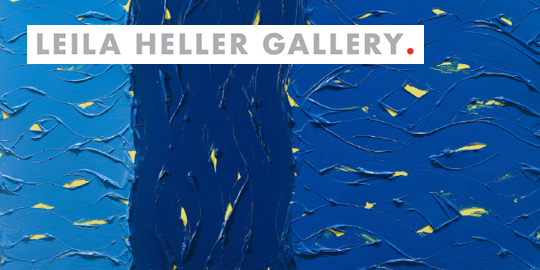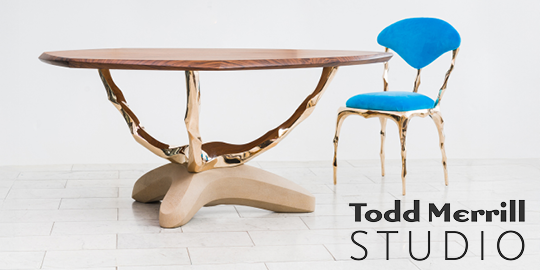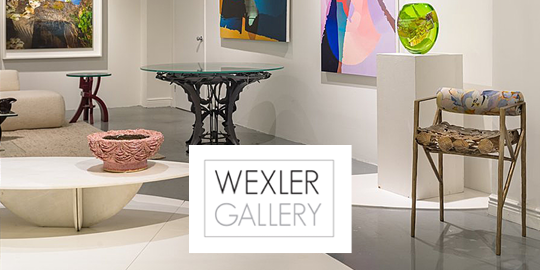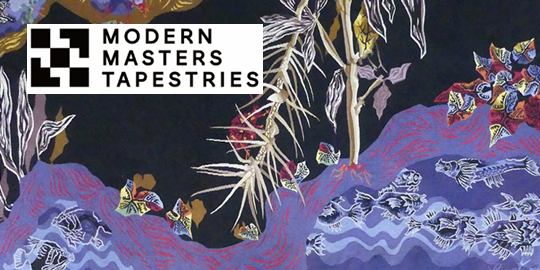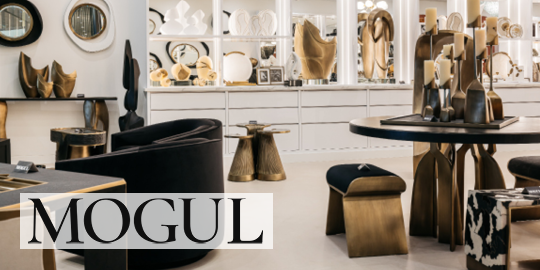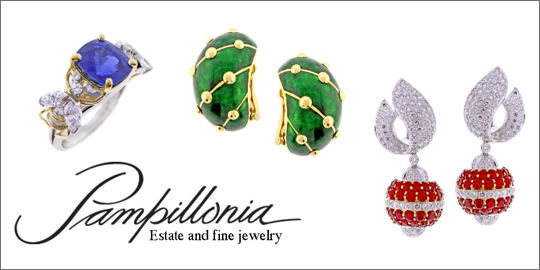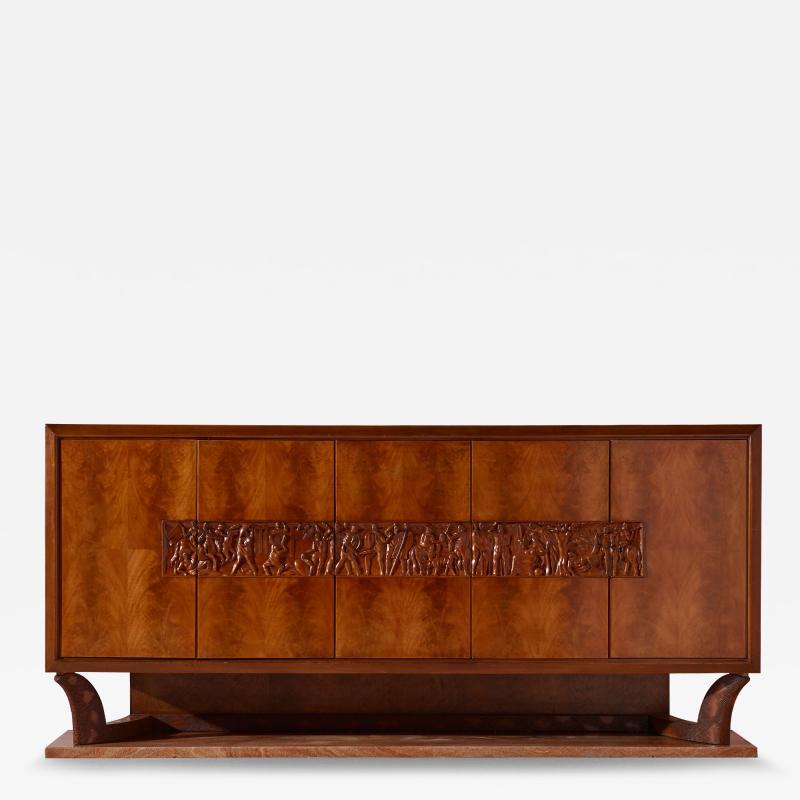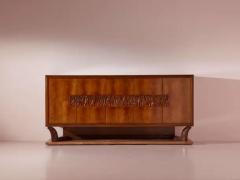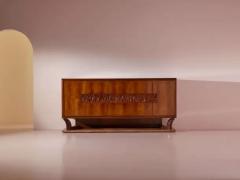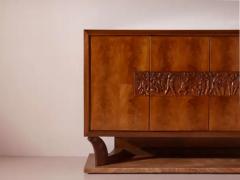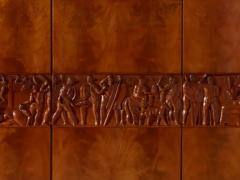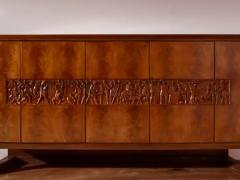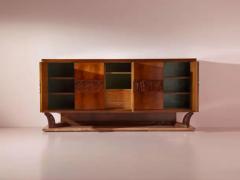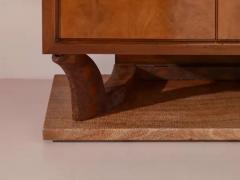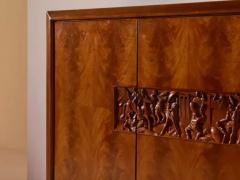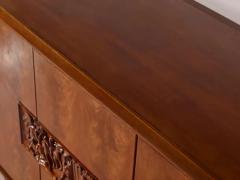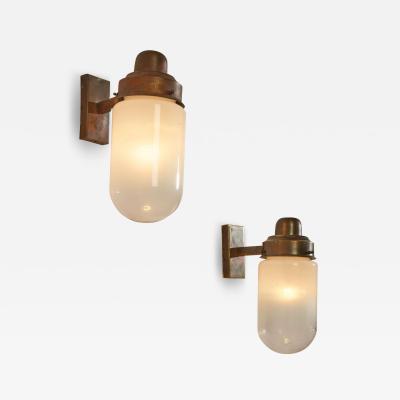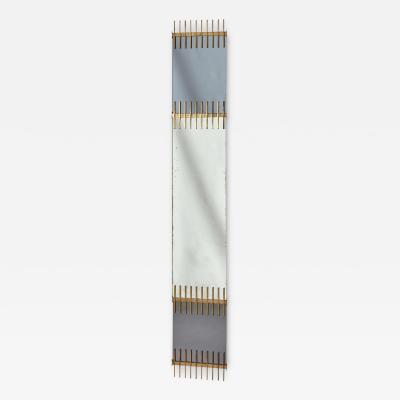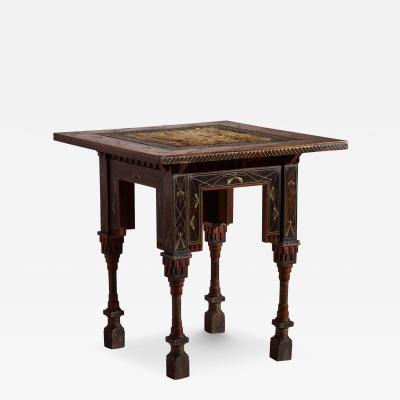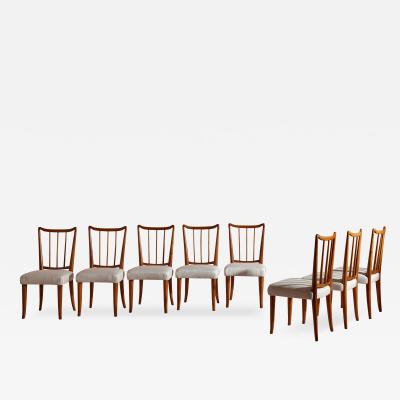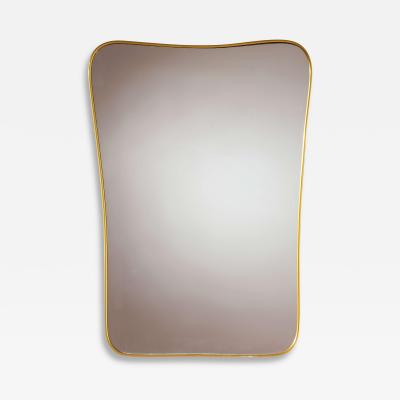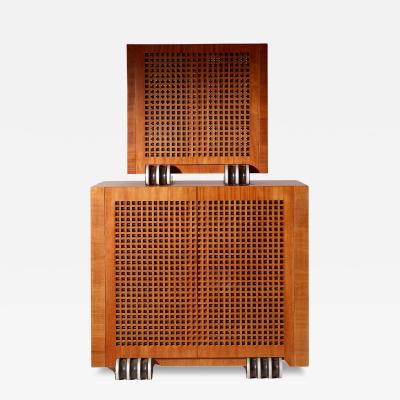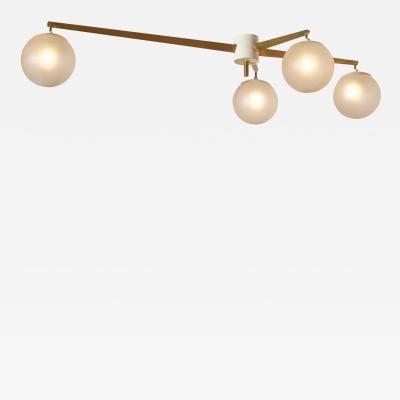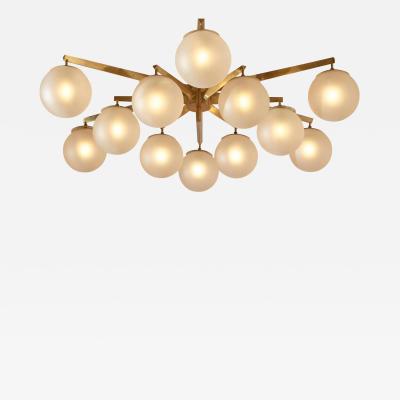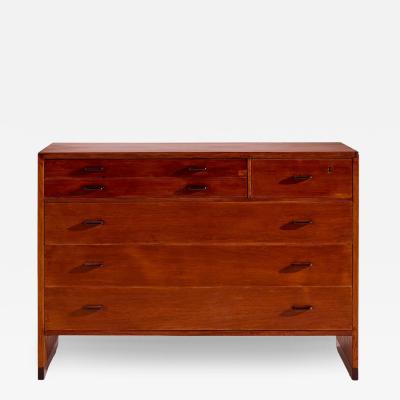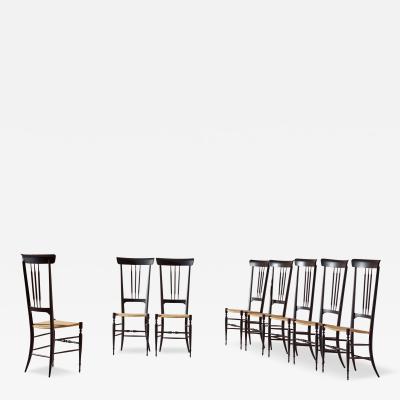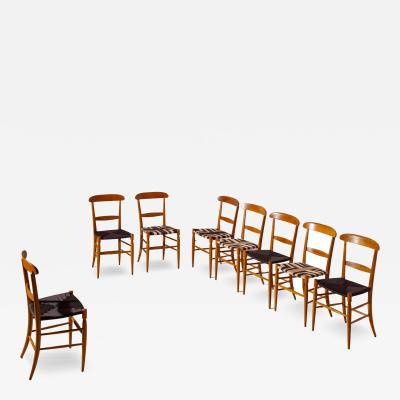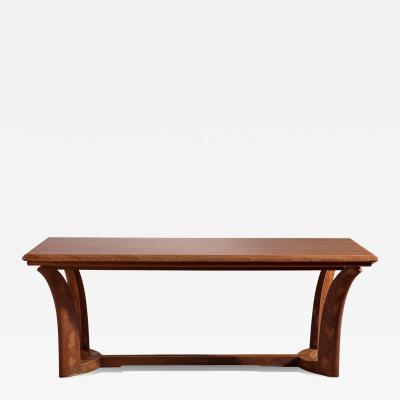Large sideboard with walnut feather veneer doors and interior drawers, featuring a carved solid wood bas-relief insert depicting mythological figures and a Rosso Fiorentino marble base. Designed by Osvaldo Borsani and produced by Arredamenti Borsani Varedo in the 1940s.
Son of a cabinetmaker, Osvaldo Borsani was among the few designers capable of seamlessly blending the artisanal excellence of traditional furniture-making with the search for new forms suited to contemporary living. His approach conveys a distinct aesthetic sensibility, where furniture and decorative elements often rise to the level of unique artistic craftsmanship.
This impressive sideboard immediately captivates with its architectural, almost monumental presence. Its base, reminiscent of an ancient sculpture, is a large slab of Rosso Fiorentino marble, acting as a pedestal for the piece. Borsani’s vision seems to strive for a perfect parallelepiped, supported by sculpted legs that visually resonate with other furnishings from the remarkable dining room set to which this sideboard belongs. The doors are clad in exquisite walnut feather veneer with a striking flame pattern, while the interior is organized with shelves and small drawers designed for silverware, enhancing its practicality. Notably, the interior is painted in an elegant shade of green, further elevating the refinement of the piece.
At the heart of the design is the long sculpted bas-relief dominating the front of the sideboard. These were the years when, in Rome, cultural and architectural discussions focused on the restoration and relocation of the Ara Pacis, the extraordinary archaeological monument dating back to 9 BCE. Commissioned by Emperor Augustus and dedicated to peace and Roman prosperity, the monument featured an exquisite cycle of bas-reliefs celebrating the emperor’s reign. Throughout the 1930s, the Ara Pacis was extensively studied and revered as a symbol of Italian identity. This renewed appreciation for Roman classicism, interpreted through the Art Déco style so prominent at the time, is clearly reflected in Borsani’s creation.
The five doors of the sideboard integrate seamlessly into the composition, preserving the commanding presence of the sculpted walnut bas-relief. The scene unfolds as a procession of figures advancing from left to right, both on foot and horseback, seemingly engaged in the defense of a banner during battle. As the composition progresses, the intensity heightens—armed warriors storm a fortified structure, some falling wounded while others gain the upper hand. A dog, facing the observer, establishes an empathetic connection with the viewer.
The narrative concludes with the timeless power of figurative art, celebrating victory: the men have laid down their arms and are feasting after battle. The final figure, a proud commander on horseback, gazes from right to left across the scene, as if recounting the events in reverse—with the authority of a seasoned warrior revisiting a lifetime of triumphs. His expression, perhaps weary, perhaps contemplative, seems to trace the history before him, once again telling a heroic tale of valor and conquest.
Dimensions: 250.5W × 52D × 119H cm


